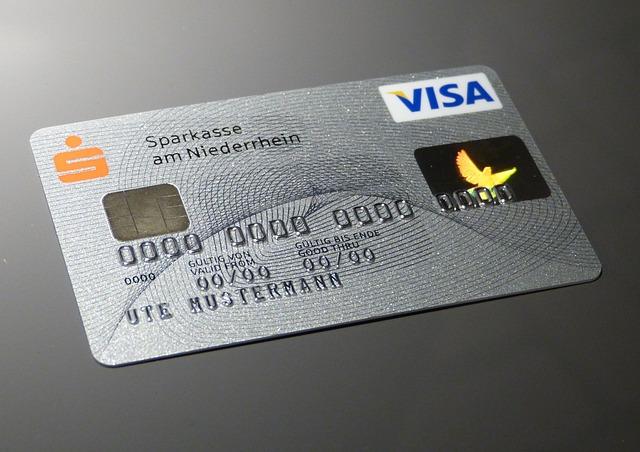Hey there motorcycle enthusiasts! Are you tired of the ever-rising fuel prices eating into your biking budget? We feel you! That’s why we’ve got some valuable insights to share about a topic close to every rider’s heart – mileage per gallon! Buckle up and get ready as we uncover the truth about motorcycle miles per gallon. From debunking myths to exploring fuel efficiency tips, we’ll have you zipping through the roads with a confident understanding of what truly matters when it comes to fuel economy. Get ready to hit the throttle with clarity, knowledge, and a neutral perspective – because the mileage truly matters!
1. Understanding the Factors Affecting Motorcycle Fuel Efficiency
Motorcycle fuel efficiency is a crucial factor to consider when purchasing a bike, as it directly affects your cost of ownership and overall riding experience. Understanding the various factors that can influence your motorcycle’s mileage will help you make informed decisions and get the most out of every gallon of fuel.
One of the primary factors affecting fuel efficiency is engine size. Generally, smaller engines tend to be more efficient than larger ones. This is because smaller engines have less internal friction and displacement, resulting in less fuel consumption. However, it’s important to strike a balance between engine size and your performance requirements, as a smaller engine may lack the power you need for certain riding situations.
In addition to engine size, other key factors impacting fuel efficiency include aerodynamics, weight, and driving habits. Streamlined designs with minimal wind resistance can significantly improve mileage by reducing the amount of energy required to propel the motorcycle forward. Similarly, lighter bikes tend to be more fuel-efficient, as they require less power to move. Finally, driving habits such as avoiding sudden acceleration and maintaining a steady speed can also contribute to better fuel economy.
To summarize, can help you choose a bike that fits your needs while maximizing your mileage. Keep in mind the role of engine size, aerodynamics, weight, and driving habits in determining your bike’s efficiency. By considering these factors, you can make smarter choices and enjoy a more cost-effective and enjoyable riding experience.

2. Exploring the Role of Engine Size in Motorcycle MPG
When it comes to motorcycles, one of the key factors that riders consider is the mileage they can get per gallon of fuel. In our quest to uncover the truth about motorcycle miles per gallon, we now turn our attention to the role of engine size. Does the size of the engine really affect the fuel efficiency of a motorcycle? Let’s dig in and find out!
Contrary to popular belief, the relationship between engine size and fuel efficiency is not as straightforward as it seems. While it’s generally true that smaller engines tend to be more fuel-efficient, there are other factors at play that can influence the mileage a motorcycle can achieve. These include the weight of the bike, aerodynamics, riding style, and road conditions.
That being said, it’s important to note that smaller engines typically have a higher compression ratio, which can result in improved fuel efficiency. Additionally, advancements in technology have led to the development of smaller engines that offer excellent power performance without sacrificing fuel economy. So don’t be quick to dismiss bigger engines if you’re looking for both power and efficiency!

3. Unveiling the Impact of Riding Style on Fuel Consumption
There’s no denying the thrill of hopping on a motorcycle and hitting the open road. The wind in your hair, the freedom to cruise through traffic, and the undeniable cool factor make it an exhilarating experience. But have you ever considered how your riding style can impact your fuel consumption?
Believe it or not, the way you ride your motorcycle can have a significant impact on your miles per gallon (MPG). Whether you’re a laid-back cruiser or a speed demon, your choices on the road can either maximize or minimize your fuel efficiency. So, let’s dive into the different riding styles and their impact on fuel consumption.
1. Aggressive Acceleration:
If you’re constantly revving up your engine and accelerating aggressively, you might be sacrificing fuel efficiency. Rapid acceleration requires more power, which in turn leads to increased fuel consumption. Instead, focus on smoother starts and gradual acceleration to conserve fuel.
2. Maintaining Steady Speed:
Consistent and steady speeds are the key to fuel efficiency. By avoiding unnecessary idling or overtaking other vehicles frequently, you can minimize fuel consumption. A steady driving style keeps your engine’s RPM in the optimal range, resulting in better MPG.
3. RPM Management:
Keep an eye on your tachometer and try to maintain a moderate RPM range. Higher RPMs require more fuel to power the engine, so aim to stay in the middle of your motorcycle’s power band. This not only saves fuel, but it also reduces wear and tear on your engine.
Remember, fuel efficiency and riding style go hand in hand. By adopting a more fuel-conscious approach, you can keep both your wallet and the environment happy. So, next time you hop on your motorcycle, think about how you can optimize your riding style to get the most out of every gallon of fuel. Safe travels!
4. The Hidden Connection between Motorcycle Weight and Fuel Economy
Motorcycle enthusiasts understand the thrill of hitting the open road and feeling the wind rush past their faces. But there’s more to riding than just the adrenaline rush – there’s also the practical matter of fuel efficiency. Did you know that the weight of your motorcycle can have a significant impact on its fuel economy? It’s true! In fact, is an important consideration for riders who want to maximize their mileage.
When it comes to motorcycles, weight matters. A heavier bike requires more power to move, which in turn requires more fuel. On the other hand, a lighter bike can go further on a tank of gas. So how do you find the right balance between weight and fuel economy? It all starts with choosing the right bike for your needs.
If you’re primarily using your motorcycle for commuting or long-distance trips, investing in a lighter bike can pay off in the long run. Not only will you save money on fuel, but you’ll also enjoy a more agile and responsive ride. On the other hand, if you’re planning on doing a lot of off-road riding or carrying heavy loads, a heavier bike may be necessary for stability and durability.
To illustrate the impact of weight on fuel economy, let’s take a look at a hypothetical comparison between two popular motorcycles – the lightweight “City Cruiser” and the heavyweight “Touring Beast.” The City Cruiser, weighing in at just 300 pounds, boasts an impressive fuel efficiency of 60 miles per gallon. Meanwhile, the Touring Beast, weighing a hefty 700 pounds, only manages 40 miles per gallon. That means the City Cruiser can travel 20 miles further on the same amount of fuel!
Ultimately, when it comes to motorcycle weight and fuel economy, it’s all about finding the right balance for your riding style and needs. Whether you’re a casual rider or a hardcore enthusiast, understanding this hidden connection can help you make informed decisions when choosing your next bike. So, the next time you hit the road, keep in mind that every pound counts – not just for performance, but for your wallet too.
5. Revealing the Truth about Wind Resistance and its Effect on MPG
Wind resistance is a force that every motorcycle rider has experienced, but understanding its impact on MPG can be a game-changer for fuel efficiency. Contrary to popular belief, wind resistance does have a notable effect on your motorcycle’s miles per gallon. The faster you ride, the more your bike has to overcome the resistance from the air. This means that if you’re cruising down the highway at high speeds, you’ll be burning through fuel faster than if you were riding at a more moderate pace.
There are a few key factors that contribute to wind resistance and its effect on MPG. Firstly, the shape and design of your motorcycle play a significant role. A sleeker and more streamlined bike will cut through the air more efficiently, reducing the resistance and ultimately improving fuel efficiency. On the other hand, bulkier or poorly designed motorcycles will face more resistance, causing fuel consumption to increase.
Additionally, the position of the rider on the motorcycle can also impact wind resistance. Sitting upright or leaning forward can make a significant difference in how much air your bike has to push through. By tucking in closer to the handlebars and positioning your body to reduce drag, you can improve MPG. It may not seem like much, but every little adjustment can add up to significant savings at the pump.
When it comes to combating wind resistance and maximizing your motorcycle’s miles per gallon, there are some practical steps you can take. Firstly, consider investing in a windshield or fairing to provide some protection from the wind. This can greatly reduce the impact of wind resistance, allowing your bike to cut through the air with ease. Additionally, maintaining a steady and controlled speed, particularly on highways, can also help reduce fuel consumption. By avoiding unnecessary acceleration and deceleration, you can keep wind resistance to a minimum and optimize your motorcycle’s MPG. So, the next time you hop on your bike, keep wind resistance in mind and take steps to improve your fuel efficiency. Your wallet and the environment will thank you!
6. Unraveling the Role of Tire Pressure in Maximizing Fuel Efficiency
Tire pressure is often an overlooked factor when it comes to maximizing fuel efficiency in motorcycles. Yet, it plays a crucial role in ensuring optimum mileage. Keeping your tires properly inflated can have a significant impact on your bike’s miles per gallon (MPG), saving you both money and reducing your carbon footprint.
Maintaining the right tire pressure provides several benefits that contribute to fuel efficiency. Firstly, it improves handling and stability, allowing for smoother rides and better control over your motorcycle. Secondly, properly inflated tires reduce rolling resistance, which means the engine doesn’t have to work as hard to propel the bike forward. This results in lower fuel consumption and improved MPG.
To make the most of your motorcycle’s fuel economy, check the manufacturer’s recommended tire pressure and ensure that your tires are properly inflated. Remember that tire pressure can change with variation in temperature, so regular checks are essential, especially during extreme weather conditions. Invest in a reliable tire pressure gauge and keep your tires within the recommended range.
In addition to tire pressure, other factors like tire tread depth, bike maintenance, and riding techniques also affect fuel efficiency. Make it a habit to visually inspect your tires for any signs of wear and tear, and replace them as needed. Proper bike maintenance, including regular oil changes and filter replacements, keeps your motorcycle running efficiently. Lastly, adopting fuel-conscious riding techniques such as smooth acceleration, maintaining a steady speed, and avoiding unnecessary weight on the bike, can further enhance your fuel efficiency.
In summary, paying attention to tire pressure is crucial for maximizing fuel efficiency in motorcycles. By simply keeping your tires properly inflated and maintaining a few good practices, you can reduce fuel consumption, save money, and enjoy longer rides while minimizing your impact on the environment.
7. The Pros and Cons of Aftermarket Modifications for MPG Enhancement
Improved Fuel Efficiency – Pros
- Aftermarket modifications can potentially increase your motorcycle’s fuel efficiency, allowing you to go further on a tank of gas. These modifications may include upgrading the air filter or installing a high-flow exhaust system.
- A more efficient engine can result in significant savings at the fuel pump, especially for those who frequently ride long distances or use their motorcycle for daily commuting.
- Enhancing your bike’s MPG can also lead to a reduced environmental impact, as it decreases the amount of fuel consumed and lowers greenhouse gas emissions.
Performance Trade-offs – Cons
- While aftermarket modifications may enhance fuel efficiency, they can also have unintended consequences on your motorcycle’s performance. Upgrades like a chip tuning or installing low-rolling-resistance tires might negatively impact the bike’s power, speed, or overall handling.
- It’s important to carefully consider the modifications’ impact on your specific riding style and needs. For example, sacrificing horsepower for improved MPG may not be desirable for those who value speed and acceleration.
- Additionally, some aftermarket modifications may void the manufacturer’s warranty, leaving you solely responsible for any potential repairs or maintenance costs.
8. Debunking Common Myths about Fuel Additives and MPG Improvement
When it comes to maximizing your motorcycle’s miles per gallon (MPG), there are plenty of myths and misconceptions floating around. But fear not, we’re here to debunk them and shed light on the truth. So, sit back, relax, and let’s clear up some of the common myths about fuel additives and improving MPG.
Myth 1: Fuel additives always increase MPG
While fuel additives can have their benefits, it’s important to note that they don’t always guarantee an improvement in MPG. Different additives work in various ways, but their effects can vary depending on factors like the engine condition, riding style, and overall maintenance of the motorcycle. It’s essential to research and choose the right additive that is compatible with your motorcycle and aligns with your specific needs.
Myth 2: Premium fuel improves MPG significantly
Contrary to popular belief, filling your tank with premium fuel doesn’t always equate to a significant increase in MPG. Most motorcycles are designed to perform optimally with regular unleaded fuel that meets the manufacturer’s requirements. Premium fuel, typically recommended for high-performance cars, may offer slight benefits in terms of engine cleanliness and performance, but it won’t necessarily result in a substantial improvement in MPG.
Myth 3: Increasing tire pressure always boosts MPG
While maintaining the recommended tire pressure is crucial for safety and optimal handling, increasing it excessively in an attempt to improve MPG is not a foolproof strategy. Over-inflating tires can lead to reduced traction, uncomfortable rides, and uneven tire wear. It’s essential to follow the manufacturer’s recommendations for tire pressure, ensuring a balance between fuel efficiency and overall ride quality.
Myth 4: Drafting behind vehicles saves fuel
Although drafting or tailgating might seem like an effective way to reduce drag and save fuel, it’s a dangerous practice that can have severe consequences. Riding too close to other vehicles increases the risk of accidents and doesn’t guarantee significant fuel savings. It’s always best to maintain a safe following distance and prioritize your safety and the safety of others on the road.
So there you have it, folks! We’ve peeled back the layers and delved into the truth about motorcycle miles per gallon. While it’s clear that mileage matters, it’s equally important to understand the factors that influence this crucial aspect of owning a motorcycle. From engine size to riding habits, each component plays a meaningful role in determining just how far you can go on a gallon of fuel. But fear not, for armed with this newfound knowledge, you are ready to make informed decisions and maximize your motorcycle’s fuel efficiency. So, rev up those engines and hit the road with confidence, knowing that you’re now well-equipped to chart a fuel-efficient course. After all, understanding the truth about your motorcycle’s miles per gallon is the key to unlocking a world of unforgettable adventures. Safe travels, fellow riders!



